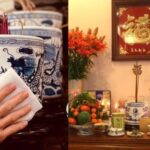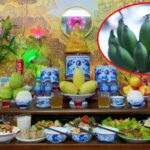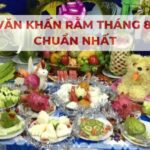What is the Ritual of Cleaning the Ancestral Altar?
The ritual of cleaning the ancestral altar, known as “Bao Sai Bat Huong” in Vietnamese, is an important ceremony typically performed on the 23rd of the twelfth lunar month or on New Year’s Eve. It involves cleaning and tending to the ancestral altar, including the incense burner, trimming the incense sticks, and adding or replacing the ash in the burner. This ritual is usually performed only once a year and is considered a significant tradition for Vietnamese families.
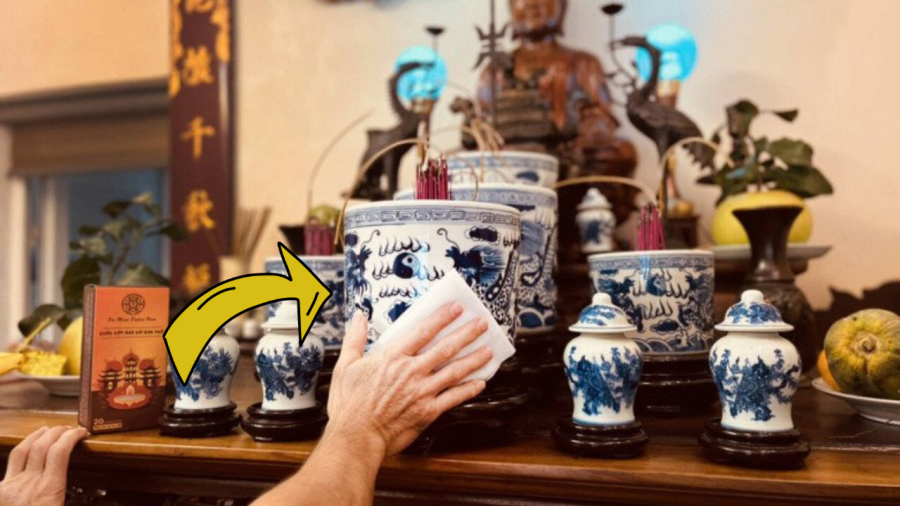
When is the Ritual of Cleaning the Ancestral Altar Performed in 2024?
According to the lunar calendar, in 2024, the 23rd of the twelfth lunar month falls on February 2nd, 2024, in the Gregorian calendar. This date, a Tuesday, is considered an auspicious day for the ritual, as it is believed to bring good fortune and prosperity.
However, many families hold the belief that the cleaning of the ancestral altar need not be restricted to this specific date. They may choose any other auspicious day to perform the ritual. Some alternative dates for the ritual in 2024 include:
21st of the twelfth lunar month, during the hour of the Dragon (7 am – 9 am)
22nd of the twelfth lunar month, during the hour of the Dragon (7 am – 9 am)
26th of the twelfth lunar month, during the hour of the Dragon (7 am – 9 am)
When performing the ritual, it is important for the family head or homeowner to keep the following in mind:
Ensure that all necessary items are prepared, including clean water, clean cloths, ginger wine, betel and areca nuts, and fresh flowers.
Bathe and ensure personal cleanliness before commencing the ritual.
Maintain a calm and respectful mindset during the ritual.
After cleaning, light incense to invite the ancestors’ spirits to witness the ceremony.
Steps for Cleaning the Ancestral Altar
Step 1 – Preparation
– Set up a high and wide table covered with red cloth or red paper. This table will be used to place the worship items. It should be clean and free from any previous offerings or rituals. Do not clean the items directly on the altar.
– Prepare a clean basin or a specialized container for the water used in cleaning the altar. The water should be mixed with ginger wine or warm water infused with five fragrant herbs.
– Have two new, clean cloths: one for wet cleaning and the other for drying.
– For cleaning the altar itself, you can use white wine, crushed ginger, rose petal water, or ready-made five-spice water, which can be purchased from religious stores.
Step 2 – Offerings and Permission
Prepare offerings and incense, and recite the prayer for permission to clean the altar. Once the incense has burned out, you may begin the cleaning process.
Step 3 – Cleaning and Tending
– Carefully remove each item from the altar and place it on the prepared table. Ensure you handle the items with care to avoid any breakage or damage.
– Start by cleaning the tablet honoring the ancestors before moving on to the incense burner and then the other items. Do not clean them in a different order.
– When cleaning the incense burner, it is believed that you should use a small spoon to remove the ash rather than turning the burner upside down, as this is considered a sign of disrespect and may bring bad luck.
– After cleaning with the infused water, dry the items with a clean cloth and allow them to air dry naturally.
– While the items are drying, take the opportunity to clean the altar thoroughly.
– Finally, when both the altar and the items are completely dry, return the items to their original positions on the altar.
Optionally, you may light incense and invite the spirits of the ancestors and deities to return, informing them that the cleaning ritual has been completed.
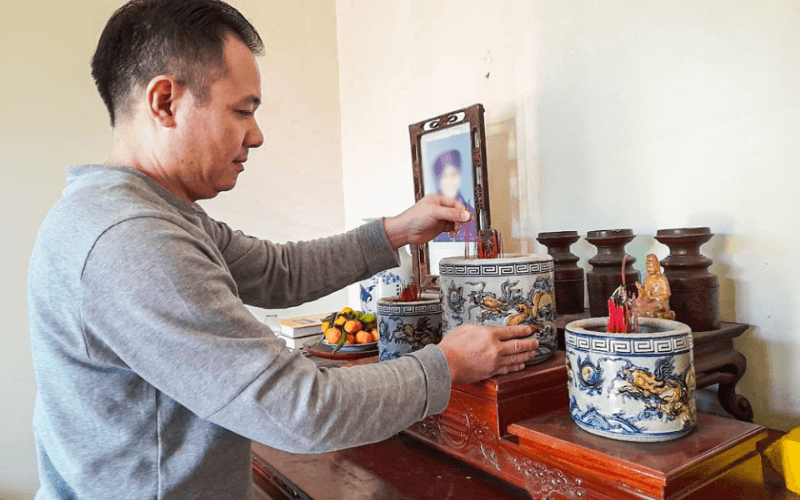
Notes on Trimming Incense Sticks
If the incense burner is too full, trim the incense sticks to a suitable length to ensure proper ventilation and prevent fire hazards, especially during the New Year when more incense is burned.
In Vietnamese folk belief, odd numbers are associated with the living world, while even numbers are associated with the afterlife. When trimming the incense sticks, it is considered auspicious to leave them in odd numbers such as 3, 5, 7, 9, 11, or 13.
The trimmed incense sticks should be burned, and the resulting ash should be scattered at the roots of trees in the garden. Never discard incense sticks or any other worship items in unclean places.
Additional Notes:
– Do not use cold water to clean the altar.
– If there is a Buddhist altar with a statue or image of Buddha, do not use wine for cleaning. Instead, use warm water, and clean the Buddhist altar first before tending to the ancestral altar.
– Before performing the ritual, take a bath and wear clean clothes. Open all the doors in the house to symbolize openness and welcome.
– When removing ash from the incense burner, retain at least one-third of the original amount. Do not replace all the ash at once.
– Keep at least three incense sticks from the previous year.
– Newly married daughters should not perform this ritual at their parents’ home in the first year of their marriage.
– Newly married sons should not perform this ritual at their in-laws’ home in the first year of their marriage.
– The ritual should be performed by the head of the household and not delegated to hired help.
– During the ritual, maintain a respectful posture and demeanor. Do not sit in a casual manner, chew betel nuts, or smoke.
The act of cleaning and tending to the ancestral altar is not just a tradition but also a way for Vietnamese families to express their gratitude and respect for their ancestors and deities. It is believed that this ritual brings positive energy and good fortune to the family for the coming year.
Why Do Green Bananas Ripen So Quickly After Being Prayed Over?
The mystery of the rapidly ripening bananas is an intriguing one. Why do green bananas, once offered as a sacred fruit on the altar, turn a golden yellow within a matter of days? This phenomenon has puzzled many, but the answer lies in the unique biology of the banana plant and the delicate balance of nature.
























